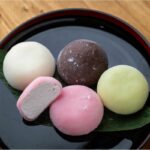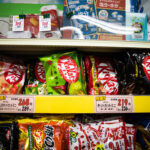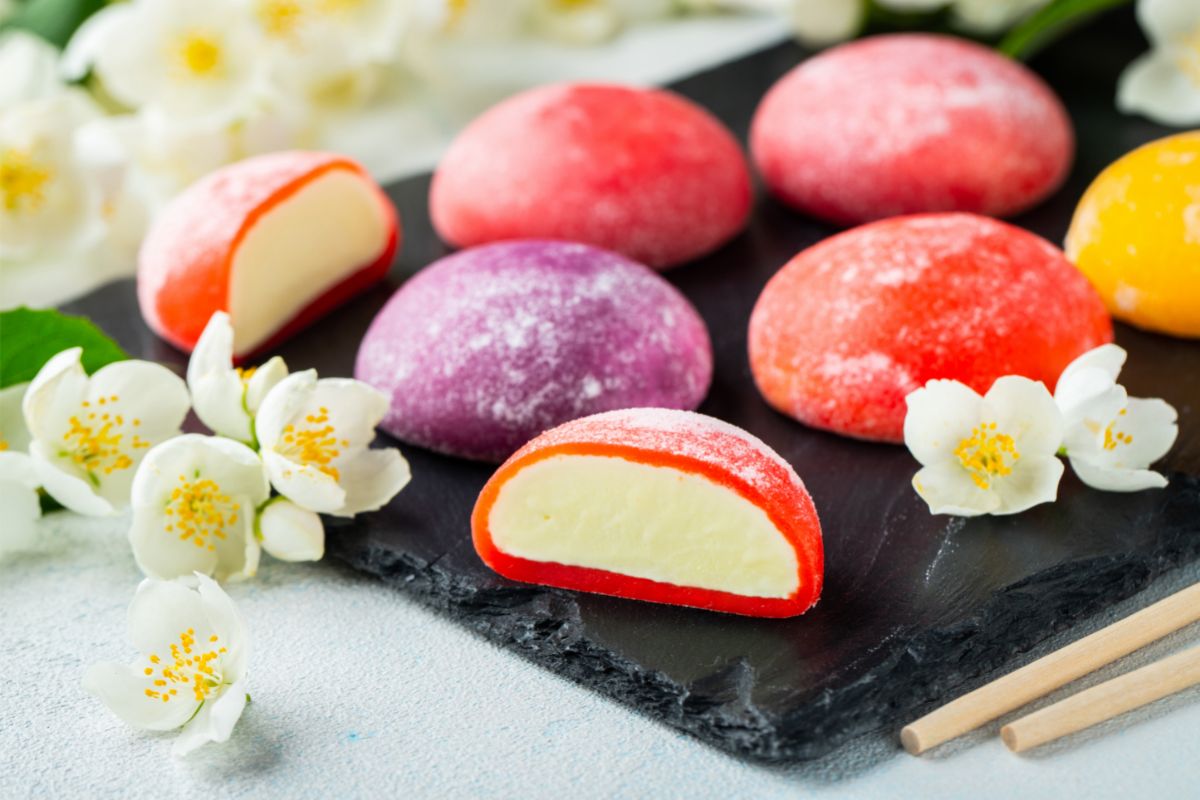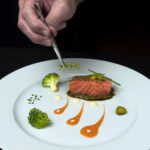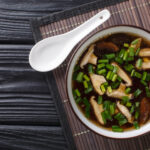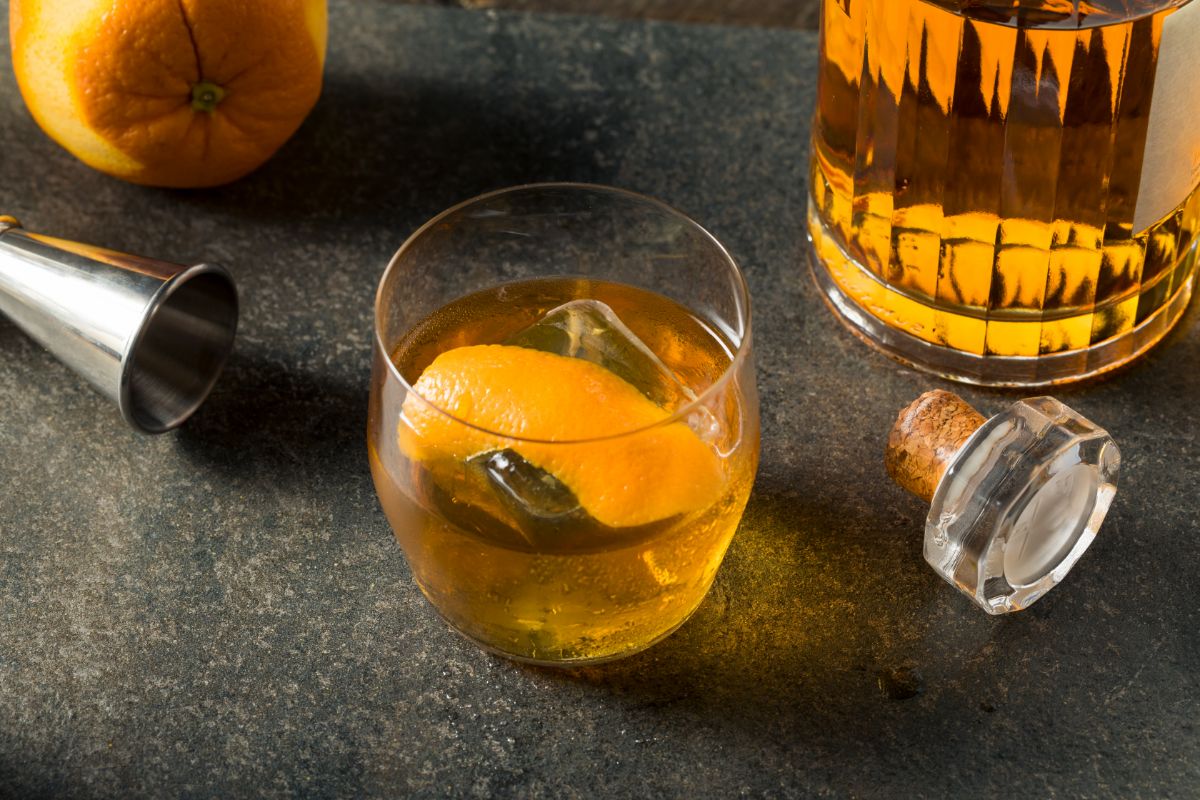The world of desserts is vast and there’s something for everyone—whether you love the crumble of a fresh cookie, the richness of a cheesecake or the refreshing taste of ice cream. Sampling local desserts is common for travelers, and there are an infinite number of delicacies unique to try, from macarons in France to tiramisu in Italy. And, if you find yourself in Japan, you’d be remiss not to try Japanese jiggly cake.
Looking for a unique dessert to satisfy your sweet tooth? Japanese jiggly cake is a decadent, light and fluffy dessert that’s in a class all its own. This “cottony” cheesecake is a confection that seems to defy gravity. Made with eggs and cream cheese, Japanese jiggly cake is a delight both to eat and to hold. It’s unlike any other dessert you’ll find in your global travels.
Read on to learn everything about this unique dessert that’s gaining popularity around the world for its delicious flavor and spongy texture.
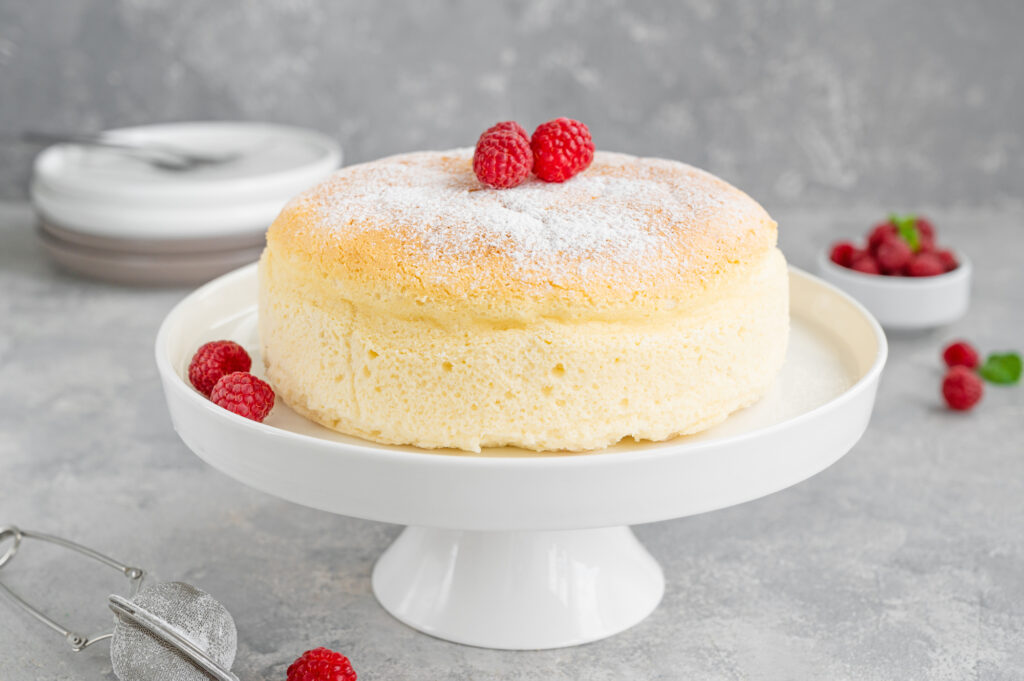
What is jiggly cake?
Jiggly cake actually goes by many names, including “Japanese cheesecake,” “fluffy cake” and “cotton cake,” among other names. It’s just one of several types of “fluffy foods” in Japan: the dessert version of another popular staple: fluffy pancakes. These foods all share the same light and airy texture, which can be attributed to vigorous whisking of the batter during preparation to create an aerated texture.
Japanese jiggly cake is best described as a loose interpretation of cheesecake. Unlike classic New York-style cheesecake—which is dense, rich and creamy—jiggly cake is more like a chiffon, or foamy-style cake. It’s tall, fluffy and, as the name implies, incredibly jiggly. Think of it like cheesecake’s cousin.
Though jiggly cake originated in Japan, it’s quickly become popular around the globe thanks to its happy jiggly-ness. It can be eaten either warm or cold, but it’s most commonly served cold in Japanese restaurants. The dessert is also delicious when it’s just finished cooling—just add warm toppings of your choice for a sweet treat you won’t be able to resist.
Jiggly cake vs. cheesecake
While jiggly cake tastes a lot like traditional cheesecake, the texture is quite different. There are many similar ingredients and elements, but the preparation is different and results in different types of desserts.
- Classic cheesecake, like New York or Chicago cheesecake varieties, features a dense, heavy texture that’s closer to pudding than traditional cake. It’s made with cream cheese, eggs and sugar, thoroughly beaten together to a creamy consistency. It’s poured into a pan and baked, and can be topped with everything from chocolate to whipped cream.
- Jiggly cake is more like a soufflé, with a light, airy texture that gives the cake its signature jiggle when moved. While it features the same ingredients as traditional cheesecake, the eggs are thoroughly whipped to create the airy texture that will translate to the finished cake. This fluffy batter is then baked, and the addition of air in the whipping process makes for a lighter consistency.
Both cheesecake and jiggly cake require precise preparation and baking. Without an eye for the details, you could end up with something in the middle—a runny cheesecake. Both of these desserts are a good reminder that baking is as much math and science as it is an art!
Toppings and flavors to try in Japan
Jiggly cake often features a generous sprinkle of powdered sugar on top, along with a fruit topping. There are two traditional toppings for Japanese jiggly cake—an apricot jam glaze or a berry topping. Many restaurants in Japan spread apricot jam on top of the cake. If you’re preparing jiggly cake at home, it’s best to mix apricot jam with hot water to make it easier to spread.
Fresh berry topping is also common in Japan. This simple compote is made from a mixture of berries—typically strawberry, blueberry, blackberry and raspberry. Jiggly cake is often garnished with a sprig of mint for a hint of fresh flavor and a pop of color.
Notice that these common toppings are in contrast to some of the most popular rich and savory toppings you might find on traditional cheesecake: chocolate, caramel and fruity syrups, for example. This is because the light and airy texture of jiggly cake is best-complemented by similar delicate flavors.
Where to buy jiggly cake in Japan
If your mouth is already watering from reading this overview of Japanese jiggly cake, all that’s left is to go out and find some to experience for yourself! The question is, where?
Jiggly cake is common on dessert menus at many sit-down restaurants in Japan, and you’re likely to see it listed as fuwa-fuwa—literally translated as “fluffy-fluffy.” Keep in mind that there are also fluffy pancakes and other foods, so look for fuwa-fuwa specifically on the dessert menu.
Outside of restaurants, you’ll find jiggly cake at confectionary stalls, market patisseries and other market stores throughout Japan. Check out food vendors in busy districts to get it fresh with toppings of your choice! Or, if you want to enjoy a piece later, you can buy cold pieces from most Japanese supermarkets that will taste just as delicious once thawed to room temperature.
How to make Japanese jiggly cake
Making Japanese jiggly cake at home is no small feat—this incredible dessert is difficult to make, even for experienced bakers. For the best experience, you’d be wise to order it at a restaurant for dessert or find a patisserie in Japan that sells it. Not only are you likely to get a delicious slice, there will also likely be topping options that let you customize your jiggly cake experience.
If you’re motivated to try and make it at home, here are step-by-step instructions to guide you as you make your own Japanese jiggly cake:
- Gather ingredients. You’ll need the following ingredients to make Japanese jiggly cake: butter, cornstarch, cream cheese, eggs, heavy cream, lemon zest, sugar and vanilla. For a traditional berry topping, you’ll need the berries of your choice, sugar and water. You should also have some fresh mint on hand for a beautiful garnish.
- Prepare the batter. Grab your cream cheese, heavy cream and butter and add them to a saucepan over medium heat. Mix the ingredients until they’re smooth and even and allow to cool before adding egg yolks to the mixture. Beat the egg yolks thoroughly—remember, adding air to the mixture is key in creating that jiggle. Then add vanilla and lemon zest to the mix. Sift the flour and cornstarch in and whisk it all together. Whisk egg whites in a separate bowl until stiff, gradually adding sugar until you make a nice meringue. Finally, slowly fold the egg white into the cream cheese base.
- Prepare for baking. Set your oven to 325 degrees Fahrenheit and allow it to fully heat. Grab a springform pan, line it with foil and pour your batter into the pan, making sure there are no bubbles. Grab a roasting pan, line it with tea towels and place your springform pan on top. Add approximately 1” of hot water into the roasting pan.
- Bake. Place the mixture in the oven and bake at 325 for 25 minutes. Reduce the temperature to 280 and bake for another 55 minutes. The cake should double in height and brown at the top. Depending on your oven, you may need to bake for another 10 minutes until the top browns.
- Cool and serve. Let your cake cool in the oven for one hour and remove it from the pan. Add powdered sugar and berry topping and garnish with mint. All that’s left to do is serve and enjoy! You can eat it hot or cold, and it’s delicious either way; however, many people swear that the best time to eat jiggly cake is fresh from the oven, while it’s still warm.
Keep in mind that precision is absolutely vital. Make sure all your measurements are spot-on, and that your baking times and temperatures are set in stone. Over-baking your jiggly cake will cause it to harden and lose its signature jiggle. Under-baking it will result in a runny mess. . If you don’t succeed, try, try again—and remember that it can be a fickle recipe to experiment with.
Enjoy this melt-in-your-mouth dessert
Japanese jiggly cake is a must-try dessert. If you’re planning a trip to Japan, keep a lookout for this fun, flavorful dessert and give it a try if you see it on restaurant menus during your travels. If you attend any festivals or spectator events, there’s a better-than-average chance a nearby vendor will be selling jiggly cake and all of the toppings you could want.
While Japanese jiggly cake is difficult to make at home, it’s a fun project that lets you brush up on your baking skills. Add your favorite toppings and don’t be afraid to experiment—you could come up with some unique flavors to satisfy your sweet tooth!
- How Much Money Can You Make Teaching English in Japan? - December 12, 2022
- The Best Places to Teach English in Japan - December 9, 2022
- The Best Credentials for Teaching English in Japan - December 8, 2022

